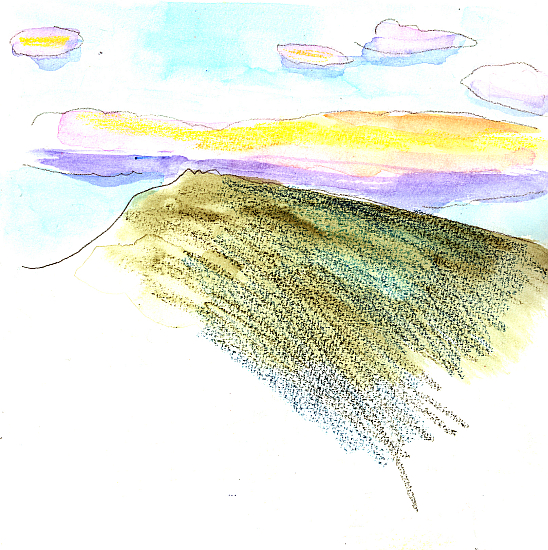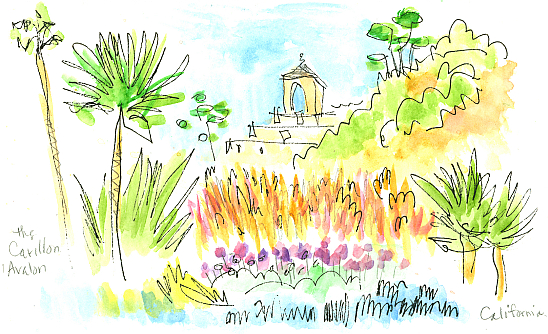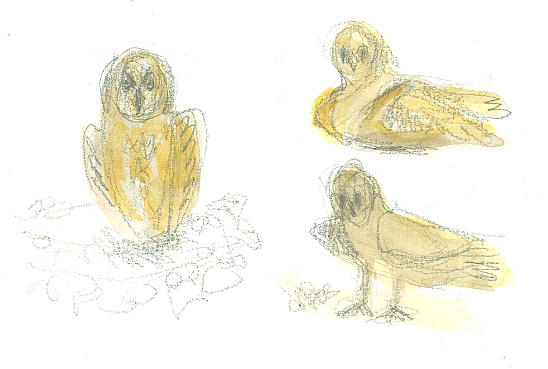In September we spent ten days in Berlin, the capital of Germany. Our last visit was six years ago with my sister and her husband, as part of a big self-guided tour through Germany, Poland, and the Czech Republic. This time — just us, one hotel, one city, no car, no tours. This was our third trip to Berlin since the Fall of the Berlin Wall 30 years ago today, and going back farther in time we had lived and worked there during the era of the Cold War and the Wall. So we have observed many contrasts, but also many wonderful continuing traditions. And we have joined in the celebrations of Freiheit and Einheit. Freedom and Unity!
We wanted to stay in a part of Berlin that we were already familiar with, so a search online found the Hotel Hommage à Magritte to be just the perfect match to all our criteria. It was located half a block from the Main Street of western Berlin, the Kurfürstendamm, it was in a neighborhood where we had once lived for a few months, and it was dedicated to the Belgian surrealist René Magritte, a master of trompe l’oeil paintings. Fool your eye. It did!
This proved to be a great choice. Small (18 rooms on one floor), reasonably priced, quiet neighborhood despite its proximity to the action, easy access to public transportation, friendly bilingual staff, and a nice breakfast buffet. Who could ask for anything more!
This photo of its exterior illustrates some of the Magritte style artwork that filled the place.
Hommage à Magritte, Grolman Straße 32, Berlin
My sketchbooks accompanied me throughout our visit. On this day we stopped for relaxation at a sidewalk café near the Reichstag building. And we laid out one of my accordion sketchbooks to help illustrate the many delightful aspects of our visit. You will also see our commonly referred to map of the Berlin transit system. It easily took us everywhere we wanted to go.
The Reichstag is the equivalent of our Capitol building. Hitler manipulated its significance to gain support for his cause in the times preceding WW II. It was badly damaged during the war but later reconstructed, and it ultimately became the Capitol building for the reunited nation. The glass dome is a new addition. More modern buildings were quickly built nearby to house other aspects of the nation’s government.
The building is open for free public tours, but advance tickets are required and they go fast. We didn’t make it. Next time!
Kaiser Wilhelm Memorial Church, built in 1891 by Kaiser Wilhelm II in honor of his grandfather. This surviving spire, one of five, was partially destroyed by RAF bombs during WW II. It was reinforced and left to stand as a ruin, as a reminder of the horrors of war. A modern church stands next to it.
A church building has occupied this site in the former East since the Middle Ages. This particular one, called the Dom or Cathedral of Berlin, dates from the late 1800s. I drew the partial view as we sat at a small sidewalk café consuming our freshly made crêpes. While not a really common Berlin treat, this brought us both back to our times in France where I spent my junior year of college.
Alexanderplatz in the former East was a new place for us to explore. New to us, that is. Lots of the action of Berlin is moving in that direction, toward the early heart of the city. I stood in one place and sketched this image, and the next one too. Bruce wandered the market in the blue and white striped tents while I drew. He always seems to know how long it will take me. It was a wide open space, full of activity, including a yellow tram.
And here is my second half of Alexanderplatz. Sharing the space with modern office buildings are a Biergarten, a bungee jumping setup, and a two tier carousel.
Informally known to Berliners as “Alex”, the square was named for Tsar Alexander I of Russia on the occasion of his 1805 visit to Berlin. I guess the Germans wanted to make a good impression on him. It has become a transit hub, shopping area, and gathering place, and was the scene of the massive (a million people) protest five days before the Fall of the Wall.
On the major street called Unter den Linden, we came across these two living statues. Their clothes were all sprayed silver, and their faces were also covered in the same colored make up. They were as still as statues until a person put a coin in the hat placed on the sidewalk. Then they moved for a minute or two in a kind of robotic way. Entertaining to watch. I sat on a bench behind them in the cool shade of a tree and sketched.
We did wonder what they first would do when they got home at night.
The famed Brandenburg Gate is the only surviving historical city gate. This was built in Neoclassical style in 1791. It was inspired by the gateway to the Acropolis in Athens. Perched on the top is the Quadriga, a chariot with four horses abreast and a center rider. It is said to be a symbol of the ancient Olympic Games. Napoleon once stole it, but the Germans got it back.
The gate became the symbol of a divided Berlin (1961-1989). In our time living for a few months in West Berlin, we could only see it at a distance, as it was entirely in the East with a wall separating it from the West. We only got a view of the tail ends of the horses. The night the Wall started to be breached, Berliners from the East climbed all over the barrier here.
The Ku’damm, or more formally the Kurfürstendamm, is a 2.2 mile long, tree-lined boulevard in the western part of the city. It was the Main Street of West Berlin during the Cold War. A little Googling gave me this historical tidbit: a Damm in German means a corduroy road. That is, a log road laid down over a swampy area. In this case constructed about 1542. Now it is one high end shop after another. And has been for decades.
I like to stand with my sketchbook in busy places and draw while all of life swirls around me. Here's the scene at a Ku'damm corner, a block or so from our hotel. I heard tiny bits of conversation as I sketched the sign post. A little child was showing his mom yoga poses as they waited for the light to change. The café was a challenge in complexity. How to indicate all the people sitting in the shade of the awning?
Our hotel in Berlin was a half block away from Savignyplatz, the confluence of seven streets and a rectangular garden. A charming, tucked away spot, with restaurants, bars, and bookstores. It was our local place to get public transportation too. Every day a nice retired lady helped us at the ticket machine. For a couple of coins in recompense to boost her retirement income. We looked forward to her help and usually needed it too, as the city is huge and has many integrated tram, bus, and subway lines, as well as trains to travel out of the city. I drew a fascinating brick church façade located just beyond the train tracks, the red and yellow train car, and book stores under the railroad bridge.
Another brick building called out to me on the other side of the tracks, just off of Savignyplatz. Drawing is a way of slowing down and looking very closely. When I did I noticed the symbols of a polo club carved into the façade.
Within a block of our hotel, I found this little children’s playground. It had some swings, and this wooden castle to climb on. I didn’t draw the part I liked best though — the mud. An old fashioned, metal, crank-handle pump could draw water into a series of troughs and down onto soft dirt. I saw the remnants of small footprints and gooey mud pies. How fun! I imagine the kids leaving their footwear at the door when they return to their homes.
Thirty years ago today, November 9, 1989, the Berlin Wall came down. Passage between the Soviet-held sector in the East and the Allied-occupied Western sectors was free and open in both directions. This and subsequent events led to the reunification of Germany on October 3, 1990, now a national holiday and a time for celebration throughout the country. We have been there on that date.
Checkpoint Charlie is the best known of the official border crossing points. There is no Charlie; the name is just Army talk for the letter C, as there were two other checkpoints along the route for Allied travel from West Germany, across part of East Germany, and into Berlin — the lesser known Checkpoints Alpha and Bravo.
I drew the checkpoint from the distance of a café on the former East side. The sign is a photo of an American guard. On the back side is a photo of a Soviet guard. The tall green building houses a museum about the history of the Wall, and the many attempted and successful escapes from the East to the West. Lots of stories of tunnels, hollowed out suitcases, and even one homemade airplane.
Berlin bleibt doch Berlin. Berlin is always Berlin!
Freiheit!
Einheit!
Berlin Freedom Concert
If you’ve only got a minute and a half, here's a great clip from the occasion.
Berlin Freedom Concert, excerpt
To follow our activities during this trip, check out our daily blog:
berlintrip-2019.blogspot.com































 .
.






























